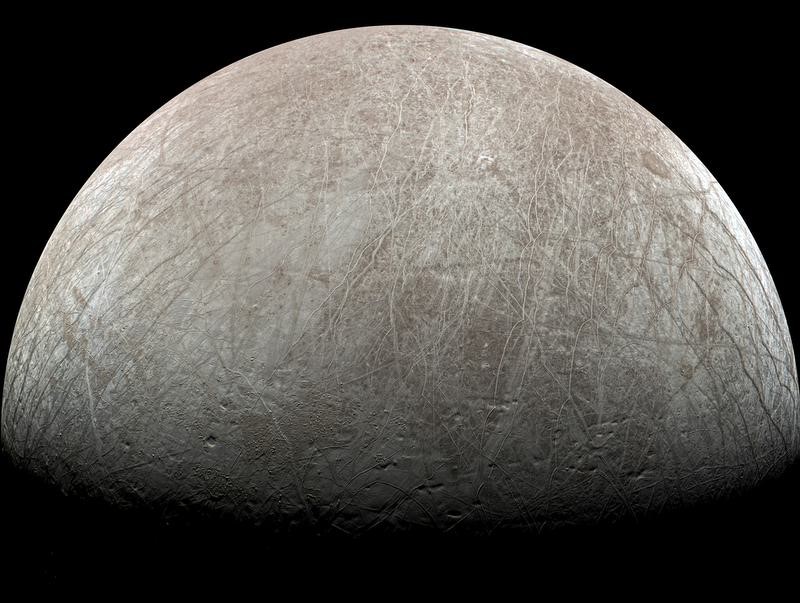Description

Disclaimer: Copyright infringement not intended.
Context
NASA’s VIPER rover is expected to begin its search for water near the moon’s south pole. Lunar Trailblazer will also map the location of water from an orbital position. These missions will be joined by a launch of NASA’s Artemis programme, of which India is part.
Details
Europa Clipper
- Objective: Explore Europa, one of Jupiter's moons. Europa is slightly smaller than the earth’s moon, with a surface made of ice. Beneath its icy shell, Europa likely harbours a saltwater ocean, which scientists expect contains over twice as much water as all the oceans here on Earth combined.
- Exploration Strategy: Europa Clipper aims to conduct approximately 50 flybys to study Europa's icy shell, surface geology, and subsurface ocean. It also intends to search for active geysers on the moon.
- Launch Details: Planned launch on a SpaceX Falcon Heavy rocket in October 10, 2024. Anticipated arrival at the Jupiter system around 2030.

Artemis II Launch
- Objective: Part of NASA's Artemis program focused on returning humans to the Moon and establishing a sustainable presence for future Mars missions.
- Mission Scope: Artemis II is a crewed mission designed to orbit the Moon for ten days. It builds upon the success of Artemis I, an uncrewed capsule that orbited the Moon in late 2022.
- Launch Schedule: Expected launch in November 2024, subject to potential delays based on equipment readiness.
VIPER Mission
- Objective: Deploy the Volatiles Investigating Polar Exploration Rover (VIPER) to explore the Moon's south pole.
- Mission Focus: VIPER will search for volatiles like water and carbon dioxide, critical for future human lunar exploration endeavors.
- Challenges: The robot will navigate extreme lunar temperatures, from 224 degrees Fahrenheit (107 degrees Celsius) in lunar daylight to frigid -240 degrees Celsius in shadowed regions.
- Launch Schedule: Set for November 2024.
Lunar Trailblazer and PRIME-1
- Mission Details: NASA has recently invested in a class of small, low-cost planetary missions called SIMPLEx, which stands for Small, Innovative Missions for PLanetary Exploration. These missions save costs by tagging along on other launches as what is called a rideshare, or secondary payload.
- Lunar Trailblazer: An orbiter aimed at mapping water molecule locations on the Moon's surface.
- PRIME-1: A mission intended to test drilling technology on the Moon, crucial for future exploration efforts.
- Launch Timing: Dependent on the readiness of primary payloads, potentially launching around mid-2024.

JAXA’s Martian Moon eXploration (MMX)
- Objective: Investigate Mars' moons Phobos and Deimos to determine their origins.
- Mission Strategy: MMX plans to spend three years around Mars, conducting observations and collecting samples from Phobos before returning to Earth.
- Launch Schedule: Expected launch in September 2024.
ESA’s Hera Mission
- Objective: Study the Didymos-Dimorphos asteroid system after NASA's DART mission tested a kinetic impact asteroid defense technique.
- Mission Scope: Hera aims to study the physical properties of these asteroids following DART's impact that altered Dimorphos' orbit.
- Launch Schedule: Set for October 2024, with anticipated arrival at Didymos and Dimorphos in late 2026.
|
PRACTICE QUESTION
Q. Discuss the significance of India's participation in the Artemis program and its implications for the country's space exploration endeavors. (250 Words)
|











